Selling in professional auctions
Auction houses
Let's all face it. Selling collections after years and years of collecting is hard. Emotionally AND financially.
By the time collectors consider liquidation, they are well aware of professional auctions. Chances are, collectors acquired a good percentage of their collections from professional auctions. They are probably aware of all the auctions houses and possibly even their principals. If not, please check my dealers' page for contacts.
Selling a few items is easy, especially if certificates are moderately desirable, moderately priced, and profit is not a major issue. Simply contact one or more houses, ask if they are interested, and send certificates through the mail. Insured, of course.
Selling large collections will take more consideration. Collectors should probably contact two or three houses that have generally sold certificates like already owned. Compare their suggestions and attitudes about selling your material. They may not necessarily want everything and they may insist of selling common material in larger lots. They will likely have similar, but not identical policies on less obvious, but important secondary issues listed below.
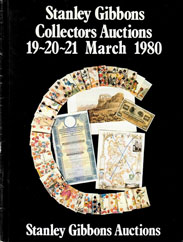 |
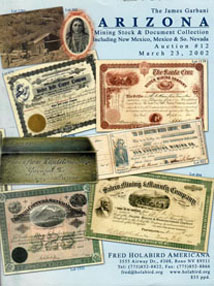 |
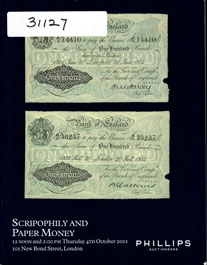 |
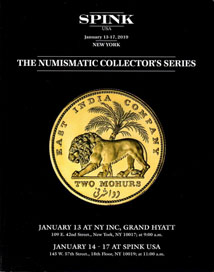 |
| Auctions catalogs by Stanley Gibbons (1980); Holabird Western Americana (2003); Phillips Auctioneers (2001); Spink (2019) |
Sellers' commissions
During the buying phase, collectors become aware that they must pay commissions to auction houses as buyers. They may not be aware that sellers also pay commissions. When contracting with auction houses to liquidate collections, it is crucial to learn sellers' commission fees. However, exactly like commissions paid when buying, such fees involve the amount of money you will receive.
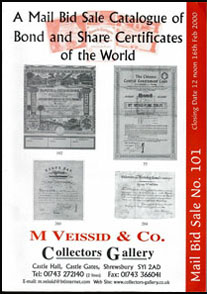 |
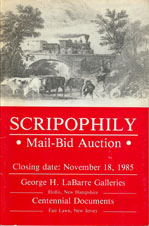 |
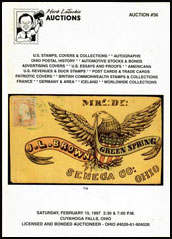 |
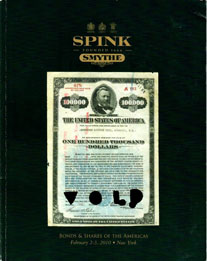 |
| Auctions catalogs by M. Veissid & Co (2001); George H LaBarre & Centennial Documents (1985); Herb LaTuchie Auctions (1997); Spink Smythe (2010) |
Advance money
A few auction houses may give advances when they think collections will attract strong bids. It is not a universal service.
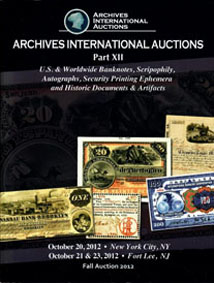 |
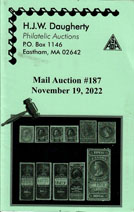 |
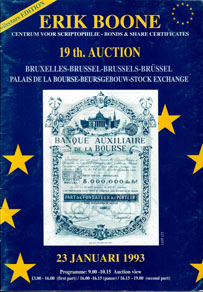 |
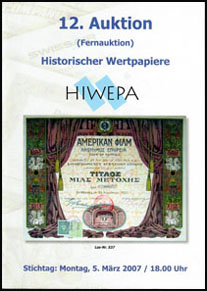 |
| Auctions catalogs by Archives International Auctions (2012); H J W Daugherty Philatelic Auctions (2022); Erik Boone (1993); Historischer Wertpapiere (HIWEPA, 2007) |
Settlement times
How long after the sale will it take houses to pay? Most will pay within a few weeks after sales to give time for all buyers to pay. Some might take a bit longer when sales include items that might attract objections to descriptions or authenticity. Stocks and bonds are rarely in that category, but autographs can be.
Auction houses need eyeballs
That means they need lots of collectors on their contact lists. Auction houses may or may not divulge that information. However, prospective sellers can look at past auctions and compare "sell-through" rates of various houses. ("Sell-through" is the percentage of lot sold divided by the number of lots offered.) Sales reflect a myriad of variables including time of year, start prices, commission rates, image quality, and past interactions. Still, if a house routinely has sell-through rates higher than competitors, it almost certainly has more robust contact lists.
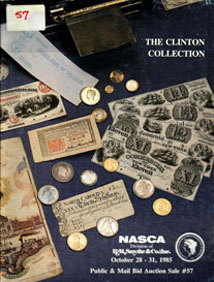 |
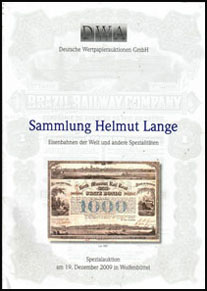 |
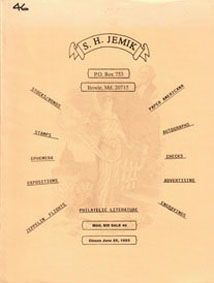 |
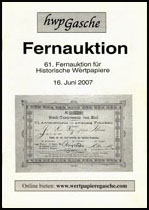 |
| Auctions catalogs by Numismatic Antiquarian Service Corp (NASCA, 1985); Deutsche Wertpapierauktionen (2009); S H Jemik (1992); Historische Wertpapiere Gasche (2007) |
Higher prices in Europe, especially Germany
Some North American sellers might consider selling through European auction houses because prices paid for stocks and bonds are higher there. Prices realized suggest European collectors tend to prefer issued certificates over unissued remainders and specimens. Europe might not be the best place to sell if your collection is heavy on those kinds of items.
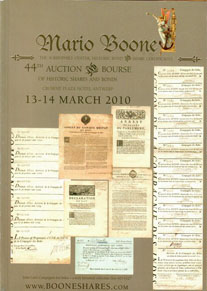 |
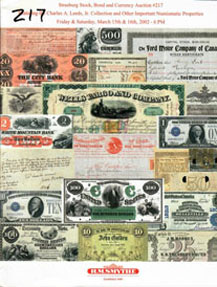 |
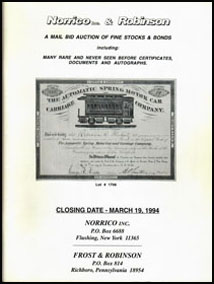 |
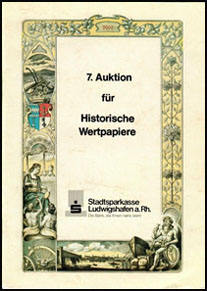 |
| Auctions catalogs by Mario Boone (2010); R M Smythe (2002); Norrico & Robinson (1994); Stadtsparkasse Luwigshafen (2000) |
When will items be auctioned?
Stock and bond sales are higher during cold months. Sales during summers tend to be lower. It may take several months to describe and photograph (or scan) collections, so it might be important to situate sales to coincide with better sales periods.
Multi-item lots
Auction houses need to do two things. They need to decrease the amount of time they spend describing and imaging certificates and they need to increase their income per hour during sales. It usually takes roughly the same amount of time to describe and sell $100 items as $10 items. Therefore, they will need to combine low-priced items into multi-item lots. Unfortunately for sellers, multi-item lots attract bids based on per-unit prices. Collectors may not like how professional auction houses make up and promote multi-item lots.
I am NOT advising, but merely mentioning, that another alternative for collectors might be to sell low-value items on eBay themselves and high-priced items through professionals. Or perhaps sell custom-tailored lots to semi-professional eBay sellers. Although more hassle, doing so might decrease the disappointment of prices realized for multi-item lots in professional auctions.
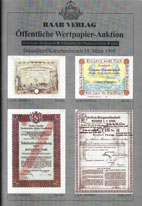 |
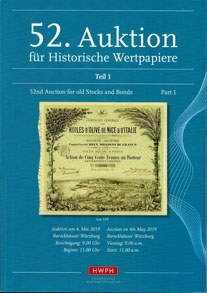 |
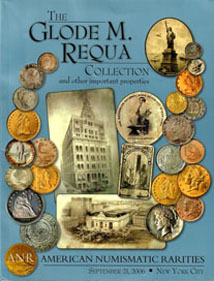 |
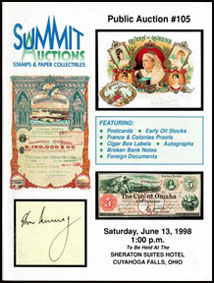 |
| Auctions catalogs by Raab-Verlag (1995); Historisches Wertpapierehaus (2019); American Numismatic Rarities (2006); Summit Auctions (1998) |
Minimum bid customs
Auction houses normally state acceptable minimum bid amounts, both to protect seller interests and their own income. Minimum bids help auctions move faster. In the auction business, time is money. In live auctions, auctioneers normally have the stated right to lower opening bids to get bidding started. Once bidding starts, sales very frequently exceed stated minimums.
However, I have heard from MANY collectors that they think minimum bids are too high in today's collecting climate, especially when combined with record high commission rates. While I don't necessarily agree, a few correspondents have complained that minimum bids at some houses are now so high that they no longer consider them to be acceptable places to buy. I can see the problem from both sides. Collectors have a point, while high minimums and high commissions are necessary to keep an auction house in business. While recorded sales in my database suggests high minimums and high commissions are lowering sell-through rates, that conclusion is confounded by decreases in the numbers of active collectors.
I suggest considering minimum bid customs in choosing, but don't let that be the sole factor in deciding between prospective professional auction houses.
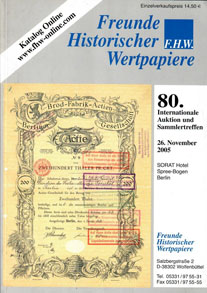 |
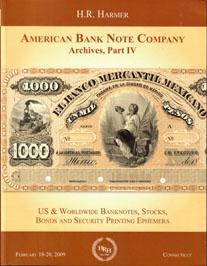 |
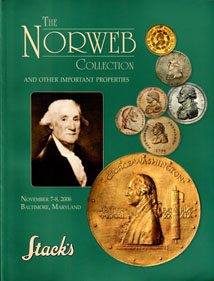 |
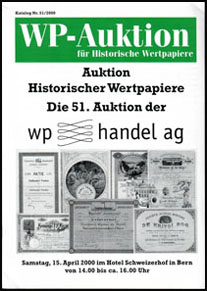 |
| Auctions catalogs by Freunde Historischer Wertpapiere (2005); H R Harmer (2009); Stack's Rarities (2006); WP-Auktion für Historische Wertpapier (2000) |
Unsold lots
An absolute auction is one in which every item will be sold regardless of price. Absolute auctions are very rare today. Unless an auction house conducts an absolute auction, there will always be unsold lots left after sales. Again, I suggest collectors look at sell-through rates of various auctioneers to get a handle on the likely percentage that will be sold when their items go across auction blocks. Determine what the houses do with lots that don't sell.
I don't have any idea of the percentage, but some houses will buy unsold lots. Others will re-offer lots one or more times, ideally at lower minimum bid amounts. It is one thing if collectors need to take back unsold items, but another thing entirely if heirs are selling. What would they do with a bunch of certificates they knew hadn't sold?
By purchasing unsold lots, auction houses can offer them indefinitely to capture at least some of the commissions they had missed at their first attempts. Moreover, they can place those same items in future auctions at any time. They can use them to fill out lean auctions, or hold them back when they already have many consignments. Yes, they will collect buyer commissions, but since they already know at what prices items failed to fetch, they will often need to drop prices by 10%, 20%, or more.
One of the problems of offering items two or more times is that collectors notice. Correspondents complained to me about repetitive offerings. Knowing those perspectives exist, auction houses may need to hold back unsold items longer than they would like.
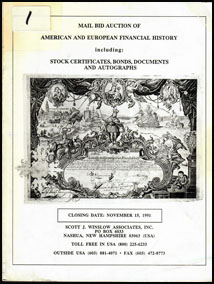 |
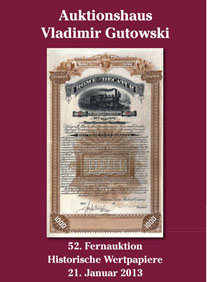 |
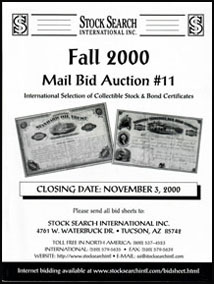 |
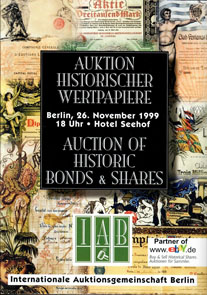 |
| Auctions catalogs by Scott J Winslow & Associates (1991); Auktionhaus Vladimir Gutowski (2013); Stock Search International (2000); Internationale Auktionsgemeinschaft Berlin (1999) |
Shifting perspectives
Looking at images of old auction catalogs on this page, it becomes painfully clear how many auction opportunities have disappeared. Realizing that both collectors and auction houses are diminished in numbers, it has become even more important for both parties to understand the perspectives of the other. Collectors may dislike high minimum bid amounts and high commissions, but auction houses cannot exist without profit. Even then, the number of lost auction outlets ought to inform collectors that the auction business operates on very thin margins. Only the strongest can survive.
Conversely, every percent rise in commissions drives buyers elsewhere, and that place goes by the name of "eBay." Without buyers, more professional auctions will fail. Designing auction house protocols that consider both livelihood and longevity is very much like juggling chainsaws while they are running.
As I said at the top of this page, selling is not easy. No wonder so many collectors delay the process until the bitter end – and beyond.